- info@techkasetti.com
In today’s fast-paced healthcare environment, every minute matters—especially when patients present symptoms that require timely triage. Frontline staff and nurses need solutions that are both intuitive and intelligent. That’s where the Guided Patient Workflow Assistant comes in: a modern, streamlined approach to patient triage that ensures every interaction is accurate, efficient, and actionable.
This assistant doesn’t just capture data—it guides non-clinical personnel through a smart, adaptive process, delivering relevant care recommendations and seamlessly integrating into the broader clinical ecosystem.
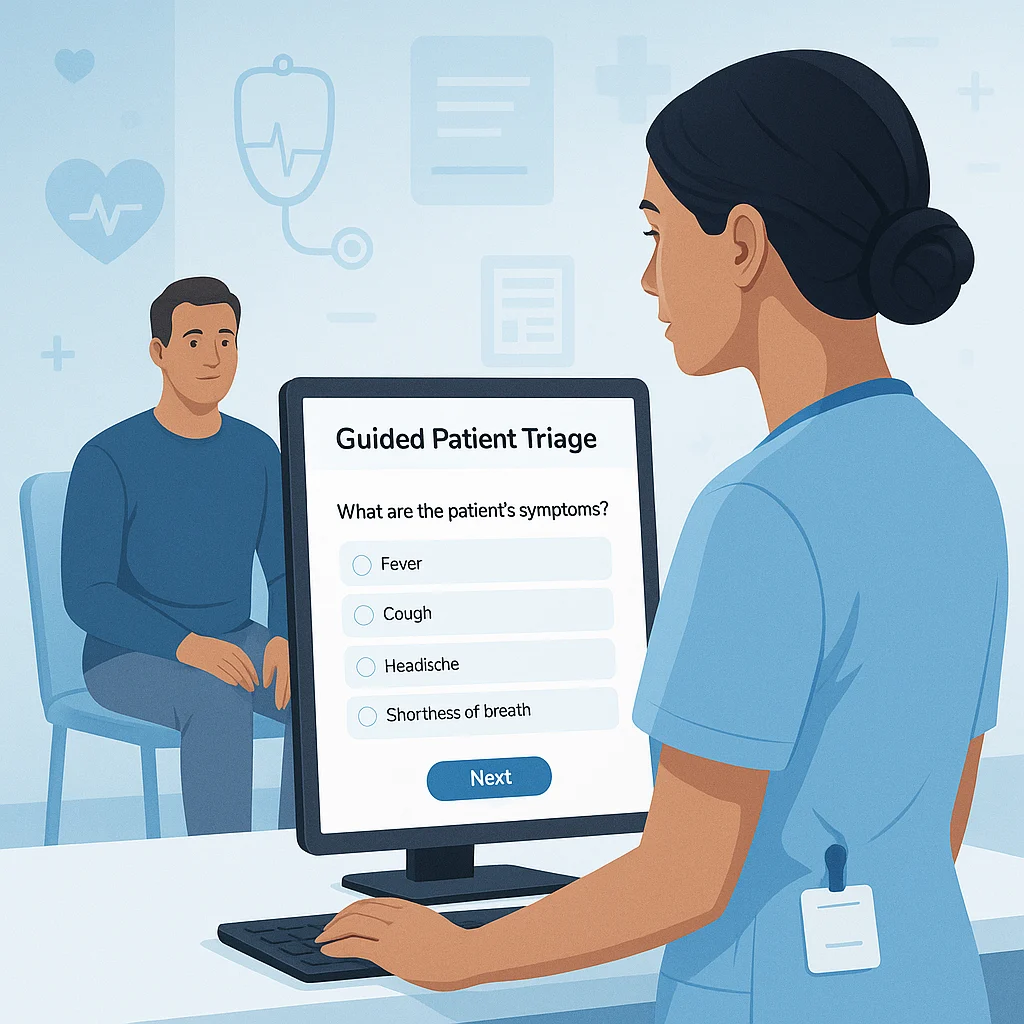
📌 Why It Matters
Healthcare providers often face the challenge of balancing clinical efficiency with patient satisfaction. Traditional triage processes—manual forms, static scripts, or inconsistent note-taking—can lead to delays, data discrepancies, and poor handoffs.
The Guided Patient Workflow Assistant addresses these pain points by offering:
- Adaptive symptom collection that evolves with patient input
- Structured care pathways based on real-time responses
- Actionable insights that support faster, more accurate decision-making
This isn’t just a tool—it’s a shift towards proactive, intelligent healthcare interactions.
🔍 Key Capabilities
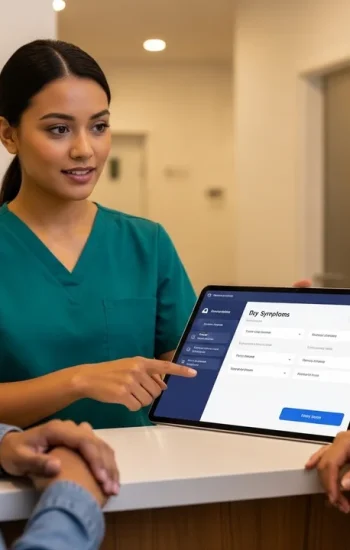
1. 🧩 Guided Symptom Collection
1. 🧩 Guided Symptom Collection
The core of the solution is an intuitive, step-by-step guided interface that enables frontline staff to collect patient symptoms in real-time. Each question presented is contextually driven by the previous response, ensuring the conversation stays relevant and concise.
Benefit: Reduces cognitive load on staff and minimizes the risk of missing critical symptoms.
Whether it’s a receptionist logging symptoms or a nurse conducting initial assessments, the assistant provides just the right level of guidance to maintain consistency and compliance.
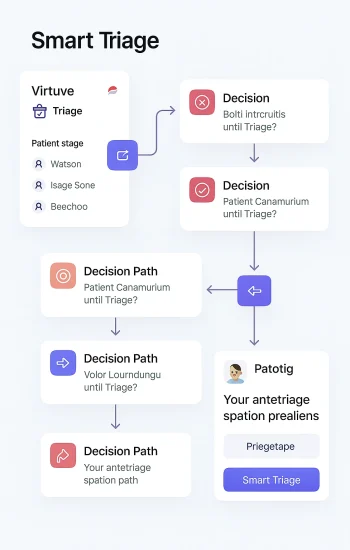
2. 🔄 Dynamic Question Flow
2. 🔄 Dynamic Question Flow
An adaptive questioning system tailors workflows based on patient input—presenting only relevant follow-ups and skipping irrelevant ones.
Example: Chest pain prompts cardiovascular questions, while nausea leads to gastrointestinal ones.
Benefit: Faster, personalized interactions that prioritize key data and boost patient satisfaction by avoiding redundant questions.
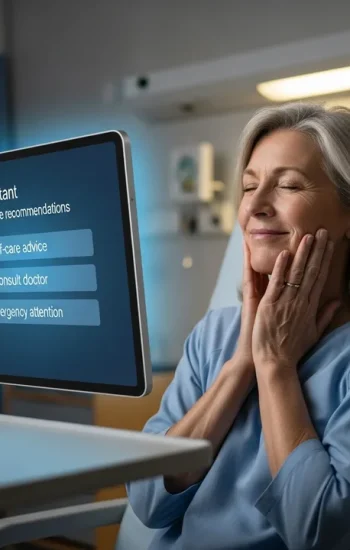
3.💡 Care Advice Recommendations
3.💡 Care Advice Recommendations
Once the system captures sufficient inputs, it provides intelligent care suggestions tailored to the symptom profile. These suggestions are aligned with institutional protocols and best practices, helping staff make informed decisions quickly.
Benefit: Empowers non-clinical personnel to contribute to the patient journey with confidence, without overstepping clinical boundaries.
These recommendations may suggest self-care guidance, routing to the appropriate care team, or even immediate escalation—ensuring that no time is wasted.
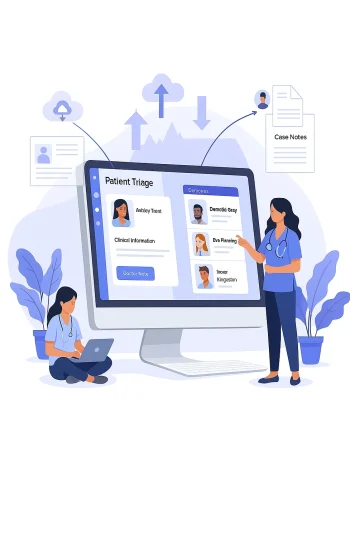
4. 🔗 Seamless Clinical Integration
4. 🔗 Seamless Clinical Integration
Behind the scenes, the assistant connects directly to the organization’s care management ecosystem. Every triaged case is automatically logged, and relevant clinical teams are alerted for follow-up.
Benefit: Reduces manual data entry, ensures data fidelity, and supports seamless patient hand-offs.
The information gathered flows into structured records, enabling care coordinators, physicians, and nurses to pick up where the assistant left off—without redundant questioning or data re-entry.
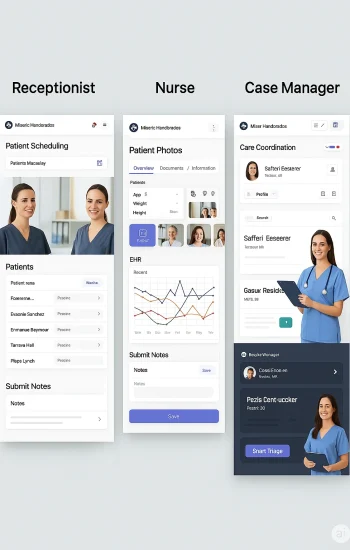
5. 👥 Role-Based Interface for Staff
5. 👥 Role-Based Interface for Staff
The assistant is intelligently tailored to the user’s role—whether it's a receptionist, a nurse, or a case manager. Each user sees only what’s necessary for their part of the journey, ensuring compliance and efficiency.
Benefit: Reduces training overhead and minimizes user errors by customizing views and permissions.
By aligning user experiences with job responsibilities, the solution promotes faster adoption and a smoother operational flow.
🌐 Transforming Triage into a Strategic Advantage
This Guided Patient Workflow Assistant is more than a digital form or chatbot—it’s a business enabler. It transforms triage from a reactive process into a strategic point of care orchestration, bringing together people, processes, and intelligence.
Healthcare organizations that implement this solution have reported:
✅ Reduced triage times
✅ Improved patient satisfaction scores
✅ Fewer data entry errors
✅ More efficient clinical handoffs
🎯 The Bigger Picture
With the right solution in place, patient triage becomes a strategic gateway—not just to care, but to smarter care. This assistant empowers non-clinical staff to do more with less, all while maintaining quality, safety, and compliance.
In a world where healthcare needs are growing more complex, this kind of intelligent workflow automation is not a luxury—it’s a necessity.
Would you like to explore how a guided triage assistant can integrate into your clinical operations? Let’s reimagine patient engagement—from the first symptom to the final outcome. 💬
